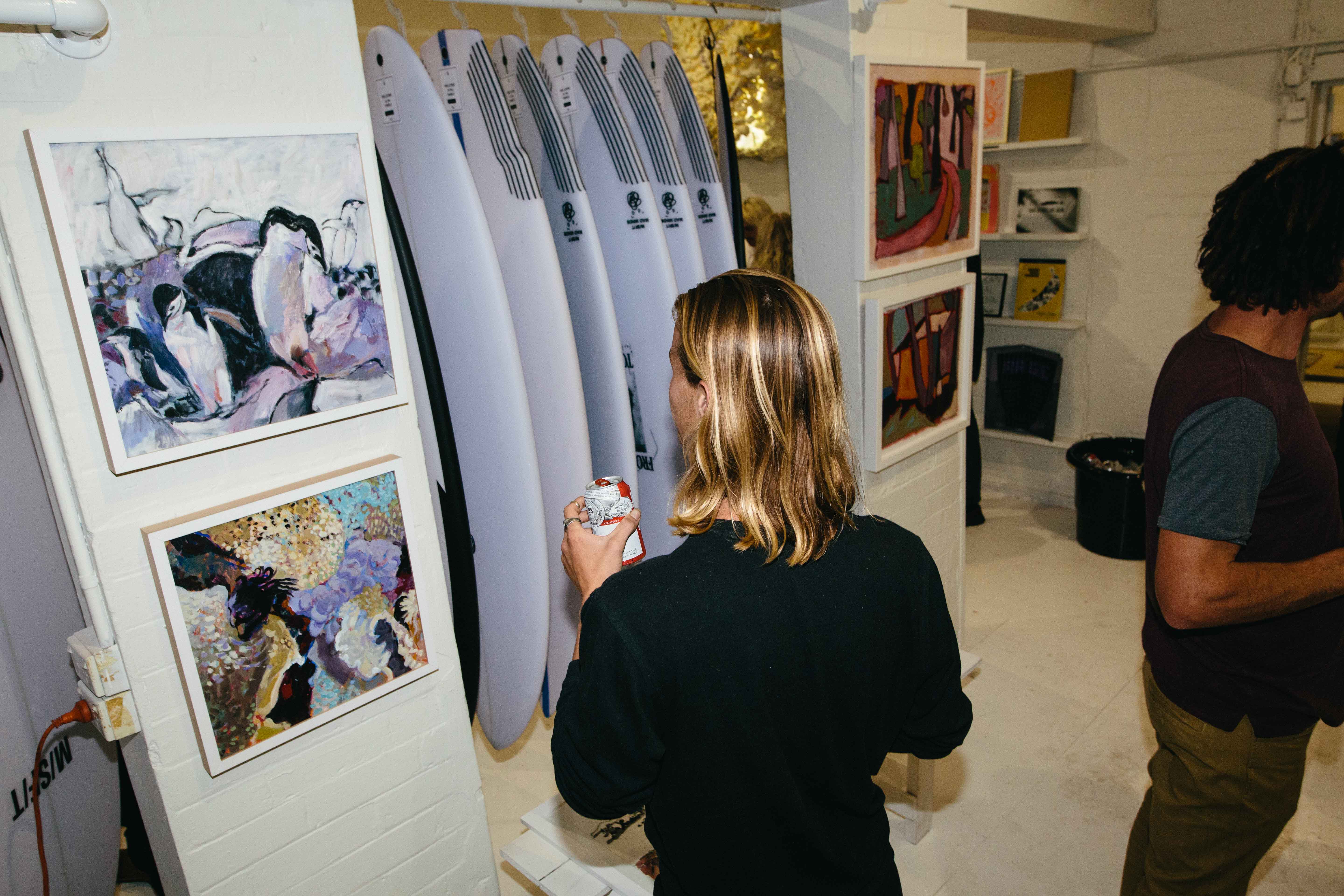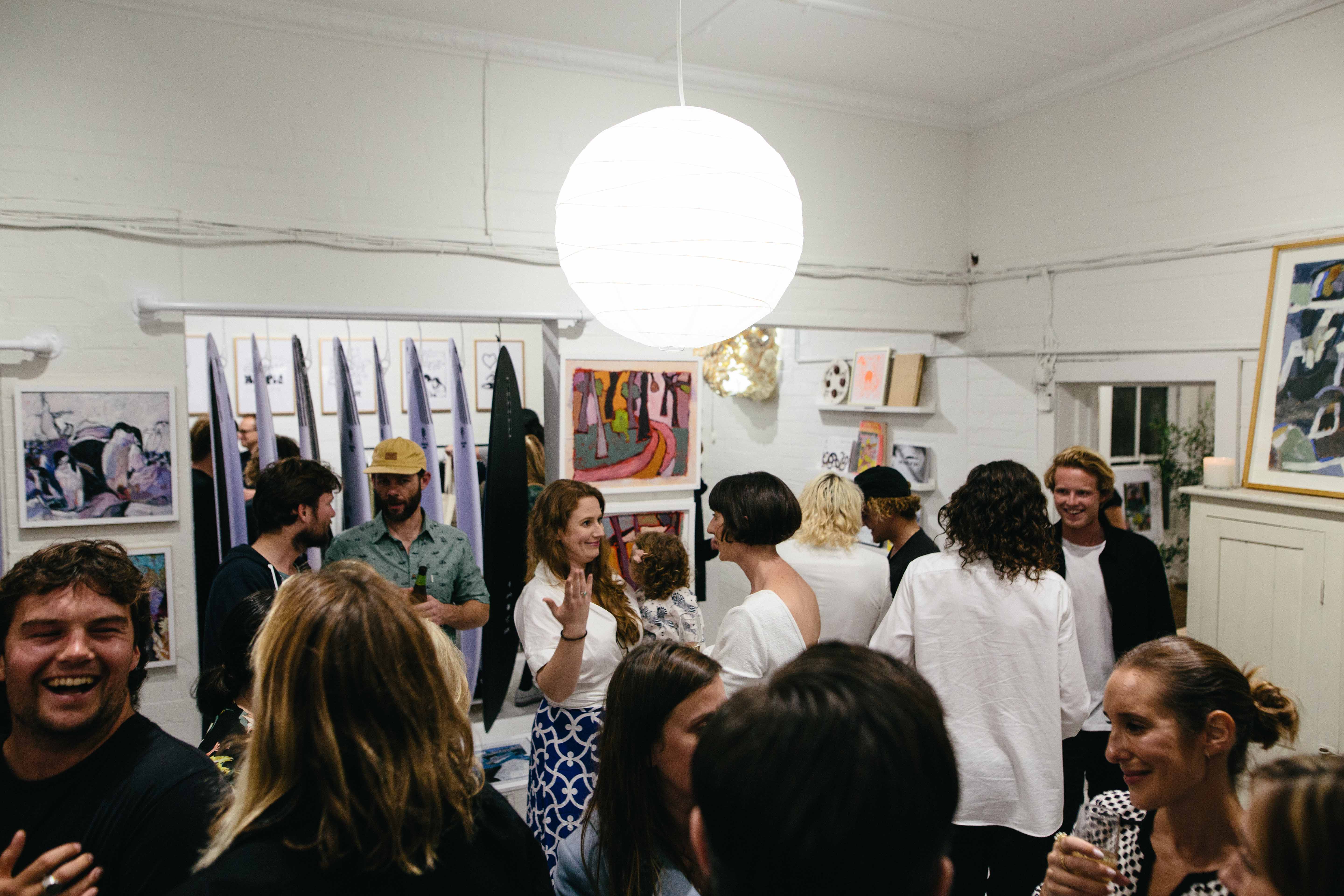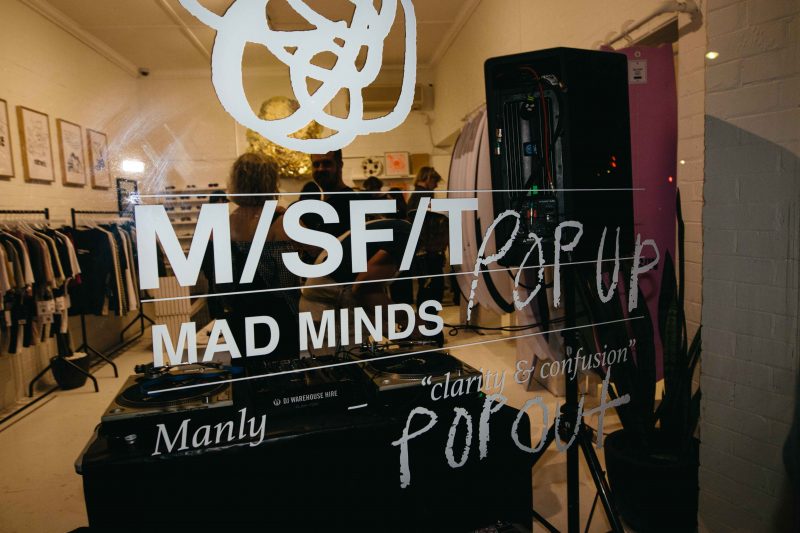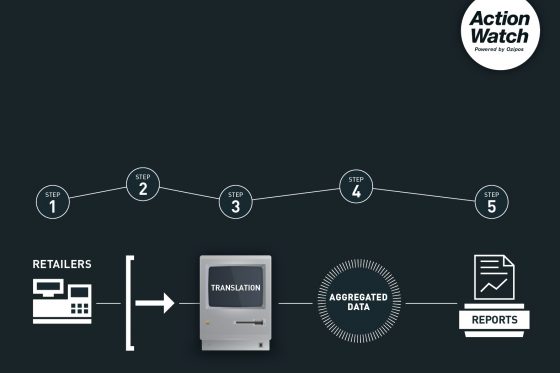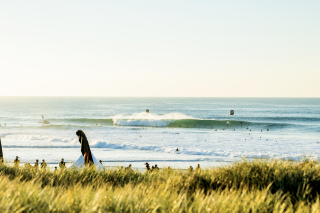It is a trend defying the gloomy retail landscape, but are pop up stores a blessing or a boon for traditional bricks and mortars? In Australia the presence of surf pop up stores are omnipresent for surf retailers and love them or loathe them pop up stores look like a ‘trend’ that’s here to stay. Caz Ridings Emge takes an indepth look at the murkier side of pop ups – mobile clearance sales.
This article first appeared in Australasian Surf Business Magazine. Do you like more articles like this and support independent surf journalism ? Why not subscribe today ? Professional Subscriptions maybe tax deductible if you operate in the surf and Action Sports market. Best of all you’ll automatically go in the draw to WIN a 6 nights stay at Aganoa Lodge, Samoa for two. Subscribe today HERE
THE POP UP SHOP PHENOMENON IS HERE TO STAY
From cool collabs to mobile clearances, pop up stores are one sector of retail enjoying an ubiquitous rise in popularity. The premise is simple enough. A pop up shop is simply a temporary retail space set up to create hype around a brand or product, or capture seasonal sales. Usually these temporary shops set up in empty storefronts or take over floor space of an existing retailer. Trading time frames vary from mere days to several months, and their spontaneity and short lifespan gives them a ‘limited time offer’ edge – when done right, this results in heightened foot traffic, brand awareness and impulse sales.
While the pop up trend is just peaking in the Southern Hemisphere, the pop up store concept isn’t new. Trendwatching.com coined the term back in 2003, with US mainstream retailer Target one of earlier pioneers in pop up concept spaces launched for their collabs with fashion designers like Isaac Mizrahi.
In the Australian youth market, the pop up trend really started gathering momentum in 2009 when brands like Ksubi and Insight started gaining kudos for creating innovative pop up retail spaces. Fast forward a few years, and even department store Myer has jumped on the pop up trend by opening temporary Myer-branded kiosks in public parks and railway stations in the lead up to Christmas. In an even more elaborate guise, Luxottica’s Sunglass Hut floating pop-up store, dubbed Neptune, opened on Sydney’s Darling Harbour for a brief four days in November for the second year running. The pop up was outfitted with a DJ booth and transparent floor for underwater viewing, and guests were privy to limited-edition frames from brands like Prada and Bulgari and hand-painted Oakley’s.
According to a report by CBRE, pop-up shops are becoming so prevalent they are helping to plug rental gaps. In 2011 Melbourne experienced historically low retail vacancy rates across Melbourne’s top 10 retail strips in the later half of the year, with vacancies falling to 3.5% thanks to a slew of short-term pop ups. Shoppers who flock to pop up stores even have an name coined to reflect their transient nature – ‘transumers.’
In surf, the uptake of pop up stores have been fairly widespread as the format resonates well with the desire for up-to-the-minute innovations and short attention spans of the youth demographic. Popular current incarnations include Sanbah’s Deus Ex Machina pop up concept store in Newcastle. Housed a couple of doors down from Sanbah’s main store, the five month long pop up has been running from September and features an eclectic mix of motorcycles, artwork, surfboards, neoprene, clothing and accessories.
However, sometimes pop ups that are a massive success for their organisers aren’t as well received by other retailers. Case in point: ASB fielded several complaints when former Rush Managing Director Wade James took his concept for a mobile clearance sale pop up on the road.
From Newcastle to Cairns and Mackay, this clearance pop up arrived in town proceeded by regional TV ads proclaiming it to be a Rush/Billabong sale, with surf products at up to 80% off.
The Flipside Of Pop Ups
When the Wade James travelling sale hit the Mackay showgrounds for a four week stint, Monique Burston, owner of Urban Wave Surf & Skate, said the effects were devastating.
They’ve been in the rag trade for 37 years, but say they’ve never seen anything as damaging to trade. “During the time the clearance was on our sales dropped 30-40%. The week after they packed up and left our sales showed immediate improvement, but the ongoing effect has been detrimental to all involved. These sales ruin the image of surf brands, and educate the public to only buy when its onsale.”
While the Mackay pop up was in full swing, Monique rallied up another concerned retailer from the area, Jane from Dodge Surf, and went down to the showgrounds to investigate. They claim they found all the GSM brands plus Ripcurl, Quiksilver, Rusty and many others, with both current and old stock available at cut price. They confronted Wade behind the counter, and Monique claims he told them he was operating on his own behalf, but with GSM’s knowledge and approval.
“When we called our Billabong agent to complain, he was very apologetic and knew nothing of this sale prior to us telling him. He contacted Billabong on my behalf to ask who was behind it, how long it was going for, and who authorised it. No one really put their hand up, therefore we couldn’t find out very much. It was like no one from Billabong knew about it either.”
As a bit of background, Wade James sold his 36 store Rush empire to Billabong’s parent company, GSM, in 2010. When ASB called Wade to fact check, he confirmed he was operating the clearances on his own behalf, but more details about the operation weren’t forthcoming.
The whole experience has Burston fuming and left with more questions than answers. Obviously the clearance sales are a response to rising surplus stock levels, and clearance sales themselves are nothing new. But this hit and run clearance sale hit them for a six at a time when trade was already tough. “What I really don’t understand is why GSM didn’t offer this stock to their existing accounts at these great prices so we could improve our GP. And by selling it through stores who already stock these labels it’s a little less obvious that there is such an overload of surf wear in the country.”
“Instead, GSM gave the stock to someone who probably isn’t even a GSM account anymore. He’ll walk away with all this money in his pocket and leave us – the retailers, the reps and the surf labels – destroyed. We as surf retailers are not allowed to sell product from anywhere else but our shops, so why is he allowed to do what he wants?” Burston said.
An industry source close to Wade’s operation who chose not to be named defended the mobile clearance concept. “Whether they are retailers or wholesalers, if an organisation has excess stock they need to move it. Sometimes it’s to hard to do that through existing channels, particularly when they are also competing with numerous other non-surf wear retailers who are just, if not more aggressive with their sales and marketing tactics.”
“There is nothing overly new about the stores – traditional retailers have been setting up temporary stores for many years in order to sell older ‘on-sale’ stock. Putting on-lines sales to one side and to put things into context, Australia has 600+ surf stores, chains and outlets – as far as I am aware, the mobile shopping experience is a very small fraction, like .02% of all surf sales in Australia.”
The source also claimed the sales were assisting in widening the market. “One of the benefits of these temporary smaller stores is they attract customers who may not already have an appreciation for a particular brand or may not ordinarily be prepared to purchase an item in a traditional retail setting, which can ultimately broaden the market and drive them back to retailers again and again. Our experience is that many of the customers we see would not ordinarily be exposed to surfwear.”
Without denying the presence of current stock at these sales, the source pointed out that for the most part the stock was dated. “My experience is the majority is older stock that would otherwise be sent back, given away and placed in outlet stores or otherwise sold ‘on sale’ at normal retail stores.”
In response to the hardships these mobile clearances place on existing stores in the vicinity, the source was more ambivalent. “As a traditional retailer I can understand and empathise with the challenges, however my experience has been that we cant afford to stand still, that we need to move with the times and as hard as it is, be open to trying innovative sales and marketing techniques and to also be open to a variety of distribution channels.”
If You Can’t Beat ‘Em, Pop ‘Em
When faced with the looming threat of a clearance pop up sale moving into a territory, retailers
aren’t completely devoid of options. Russell Zimmerman, Executive Director of the Australian Retailers Association (ARA), said besieged retailers could try applying to local council to stop a clearance pop up getting a permit to operate in their area.
“As a retailer I’d go to local council. There’s a social responsibility for councils to make sure they don’t impinge on local business. It’s obviously very difficult for traders at the moment, and councils are very aware of that. I’d explain if the councils continue to issue permits for people to run these kinds of clearance pop up stores -– and often they are run at the very height of a season – local retailers may have to shut up shop due to lack of sales. And then councils are actually out of pocket; they can’t get their annual license fee, their signage charges and their rates and their water fees and goodness knows what else. In the worst case scenario, once that retailer shuts up shop, the landlord won’t have a tenant, and the landlord could become insolvent or unable to pay rates and taxes. In some cases these casual pop up shops can often be cash businesses that aren’t paying any GST, so the government could be missing out in more ways than one. Without retailers there to pay GST to the government, they won’t receive that income that goes towards building and repairing infrastructure.”
“So appeal to their good nature, and say ‘We are local retailers. You do rely on us 365 days a year, and we pay our rates and pay our taxes. We do everything we should do to support our community, and by allowing these traders to come in and poach our business you’re making things hard for us. Have some consideration for us in this issue.’”
Failing that, Zimmerman says retailers can examine other methods to try stem the sales hemorrhage. “If you are stocking the same products a pop up store is offering, obviously it depends on the product and how much seasonality it has but you might want to remove the from shelves temporarily.”
Zimmerman also suggests re-examining your product mix. “As a retailer sometimes the product you’re selling can have the margins beaten out of it. You’re stocking a product and someone starts selling it a lot cheaper than you, then you might be better off moving away from that product and looking for replacements that can give you a stronger margin.
“For example my background is in footwear. Beachcomber thongs used to sell for $4.99 at Kmart and Target, and yet we were buying them from the supplier for $5. We made a decision not to stock that product any more, and instead only sell premium versions. Dressy things with bangles and spangles and jewels and all the rest of it, and for men only stocking leather thongs and better quality items. We didn’t sell the volume, but we made a much better profit margin on what we did sell. In surfwear you may be able to move away from certain brands and certain styles to continue to compete. Essentially I can see it as part of evolving your business.”
When confronted with stiff competition, ARA’s Russell Zimmerman also said retailers generally do better if they try and adopt a positive attitude, including looking at ways of leveraging competitors’ popularity. “The more retailers there are in an area the more competition is created, which is an essential part of a healthy retail industry and healthy economy. The more traffic an area has and the more variety there is, the better surrounding retailers can benefit from the foot traffic generated – this can often entice business into areas that had been forgotten about.”
Best In Class
Meanwhile the pop up concept doesn’t solely belong to seasonal clearances – the format has been proven to work wonders in creating fresh buzz for labels and existing stores.
Former Manly store The Shop Next Door, which sprung from the ashes of Six Ounce board store, ran a unique take on the whole pop up theme. One side of The Shop Next Door is boards, while the other side runs like a three month rotational concept store.
“One brand comes in and takes over the shop and makes it their own for three months, markets it to the world that they’ve got their own store in Manly, and then at the end of the three months someone new comes in and shares the spotlight,” explained the store’s owner, Taylor Eaton, in a clip produced for their Rhythm collab.
“It came out of desperation really. Trying to give a new generation a reason to come back here and spend time in a retail store instead of sitting at home spending time on the internet, eating ice cream and pressing click to buy things.”
“It just rejuvenates the whole experience of coming into a shop, and makes it indulgent enough for a person to come in and get into one brand. And before it becomes boring for them it revolves or evolves.”
Brands that have taken part so far include RVCA, Dues Ex Machina, O’Neill, Rhythm, and others, with each label bringing their own unique twist to draw crowds in to check out their clothing wares. RVCA chose to decorate the walls with works from their Artist Network Program, while Rhythm collaborated with Pine Street Studios, a local live music website that filmed performances of several musicians in the Rhythm x The Shop Next Door space.
With pop up stores, it is rotation of fresh influences that entices and excites shoppers. The same buzz could be replicated by building fresh collaborations.
“You can get together with other stores in the area, permanent and temporary, and compliment your brands, offer something to the consumer. There’s a whole lot of ways you can approach it,” agrees ARA’s Zimmerman.
“This might be something simple, like running a pop up in conjunction with your local surf school, offering a free lesson with goods purchased,” said Zimmerman, adding no matter which avenue you choose, never loose sight of your customer.
“Obviously customer service is an important aspect. Generally a lot of stores in country towns and beachside areas are owner drivers that give what I call ‘awesome customer service’ that often simply can’t be paralleled by fly by night pop ups.”
This article first appeared in Australasian Surf Business Magazine

